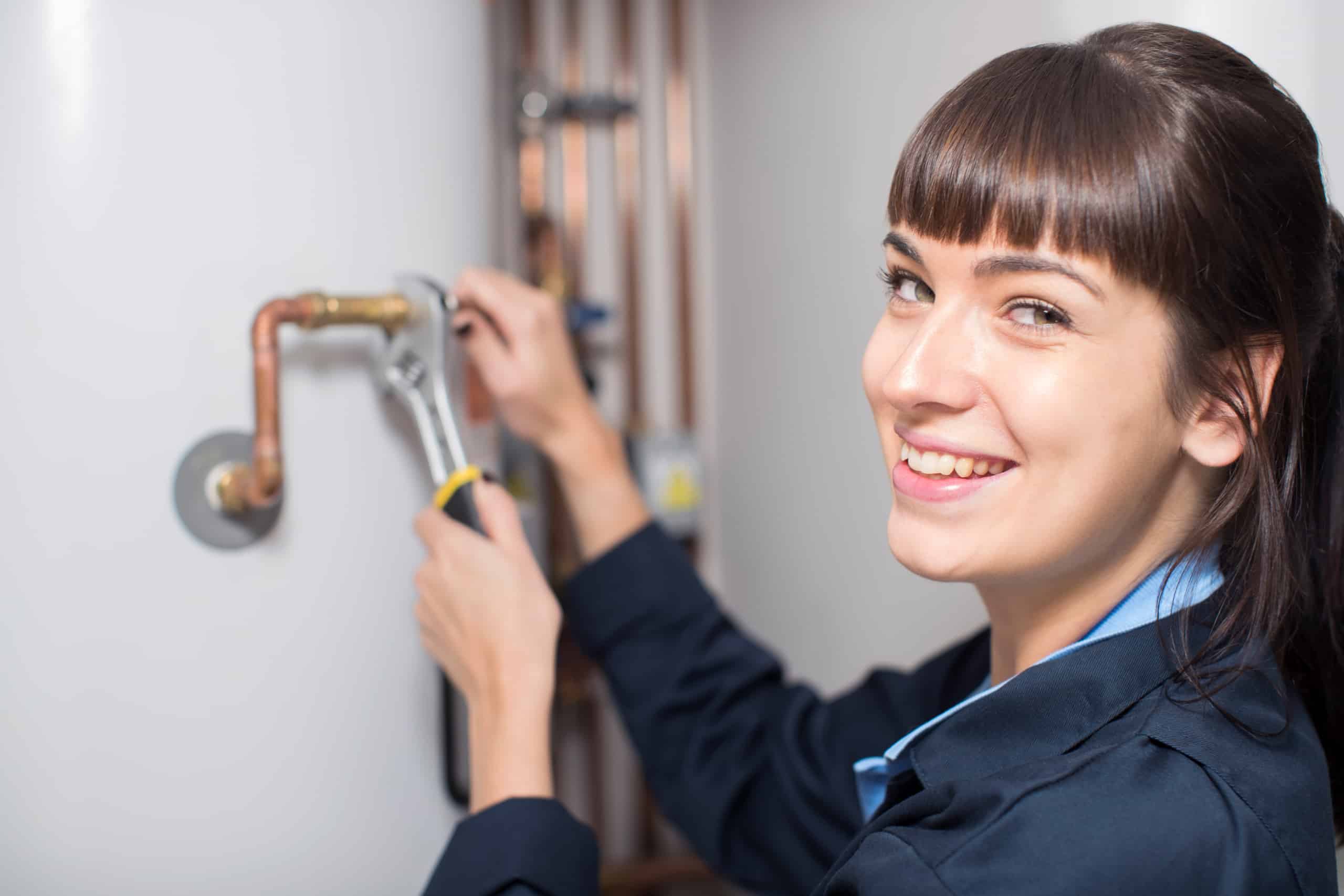Regularly maintaining your water heater is important to attain its longest life. Your water heater works hard for you every day and will need tune-ups occasionally to ensure it works to the best of its ability. Even if your water heater is providing you with hot water, there could be issues that need to be addressed. Here are some signs to look for when investigating your water heater:
- Odours
- Any odd noises
- Leaking
- Slow recovery
Temperature of Your Hot Water
The temperature of your water heater should hover around 49 degrees Celsius or 140 degrees Fahrenheit to prevent scalding of the skin. This temperature also ensures the water is hot enough to discourage bacteria growth, but not hot enough to damage your tank. If you desire a hotter temperature, you may install a mixing valve. A mixing valve will allow you to adjust the temperature of your hot water.
Check Temperature and Pressure (T&P) Relief Valve:
Follow the instructions on the valve label to inspect the T&P relief valve. T&P relief valve will drip water if the water pressure is too high, or due to thermal expansion on a closed plumbing system. You will want to install a thermal expansion tank on your cold-water line. Ensure your water pressure is under control and install a thermal expansion tank before you replace a dripping T&P relief valve.
Check & Control Water Pressure
Check your water pressure at the tank’s drain valve, a faucet, or a hose bib. If your water pressure is above the maximum code recommendation (80 psi), you will need to install a Pressure Reducing Valve (PRV). Water pressure is higher at nighttime, and lower during the day. If daytime water pressure is 60 psi or higher, your water pressure at night could be above 80 psi.
Most experts recommend setting your PRV to 50-60 psi to protect your appliances – high water pressure can damage water heaters, toilet valves, ice makers, dishwashers, and washing machines. If your T&P Valve is dripping, your water pressure is likely too high. See ‘control thermal expansion’.
Control Thermal Expansion
It is required by code to install a thermal expansion tank on a closed plumbing system. If you are on a closed plumbing system and do not have a thermal expansion tank installed, operating your water heater could result in damage to your unit as well as other appliances. Pressurize your expansion tank with air before installing on the cold-water line. The air pressure used to pressurize your expansion tank should match your water pressure.
Checking anode rods
The anode rod’s purpose is to protect your water heater’s tank from corrosion, and therefore help to extend the life of your unit. To check the anode rod, you will first want to turn off the power or gas to your unit. Next, turn off the cold-water supply and relieve the pressure in the water heater tank by opening the T&P relief valve. With a 2” cheater bar and impact wrench, remove the anode rod from the tank. If the anode rod is significantly depleted, replace it. You should check your anode rod at least every three years. If you live in a hard water area, check your anode rod annually.
Flushing Your Water Heater Tank
Flushing your water heater tank is very important (especially for gas water heaters). To do this, first turn off the cold-water supply to your tank. Attach a garden hose to the drain valve and open it. Open the T&P relief valve to relieve some pressure and drain 2-3 gallons of water out of the tank. If the water is milky in colour, drain the entire tank. Once you have drained the desired amount of water, close the drain valve and open the cold-water supply valve. Open a hot water faucet somewhere in your home, and let the hot water run for 3 minutes to make sure all air is out of the tank before you turn the power back on (this is especially important for electric water heaters to ensure you do not dry-fire an element).
Check the ventilation
To ensure your water heater is operating safely and efficiently, an unobstructed venting system is crucial. You will want to check for debris and obstructions in your venting annually on a standard atmospheric vented unit. To check if there is any obstruction in your venting, you will want to test for backdraft. To test for backdraft, you will need all windows and doors in the home closed, as well as all the exhaust fans turned on (bathrooms and kitchen). You should also turn on your dryer. These conditions will replicate every appliance being used at once.
Ensure your furnace is turned down so it will not turn on during your backdraft test. Turn on a hot water faucet and run it for a few minutes to power on the hot water heater. Once the hot water heater is running you should be able to feel the air being sucked up through the ventilation. One way to check this is to light a match near the vent hood, if it is working properly the flame should be sucked toward the vent hood. If the flame goes out, it could mean you have an obstruction.
* If you are under a rental contract, please read through your contract before you attempt any of these maintenance tasks yourself.




